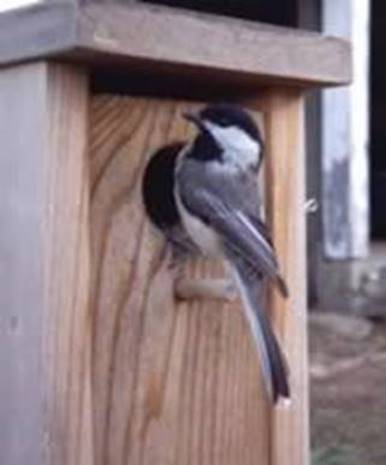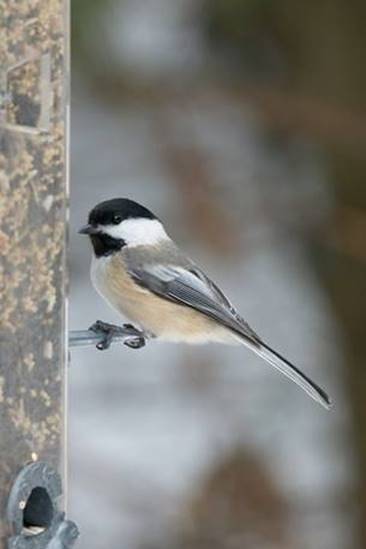Though she be but little, she is fierce. William Shakespeare, A Midsummer Night’s Dream
This is a small, common songbird that ranges from Alaska and east across Canada, south to New Jersey, Missouri, New Mexico, and Northern California. Some populations will shift southward into Maryland and Texas but the bird is a year-round resident throughout its range. Which is pretty remarkable – so small and having to deal with the cold of northern winters.
These songbirds are tiny 4.75 – 5.75 inches and only 0.4 ounces. They have a distinctive black cap and throat, white cheeks, a gray back, and dull white underparts. Their wing feathers are narrowly edged in dull white.
Poecile – Greek for small bird, atricapillus – Latin, black-capped or black-headed.
In winter they are common at bird feeders, particularly if you are offering sunflower seeds. They are found in deciduous, conifer, and mixed forests, open woodlands, and suburban and urban areas that offer decent tree cover. In winter they are often seen in mixed flocks with other small birds such as nuthatches, brown creepers, and kinglets. During winter they also scour tree branches for insect eggs and larvae. They will eat honeysuckle, blackberry, seeds, and berries of poison ivy in other seasons. They have been observed eating dead deer, skunk, and fish. Insects, spiders, and caterpillars are more normal fare, however.
In turn, chickadees are preyed on primarily by small hawks, owls, and shrikes. Chickadee eggs may succumb to predation by raccoons, squirrels, opossums, and weasels. House wrens are known to destroy their eggs and take over a nesting cavity.
They nest in cavities of trees, excavating out a hollow in soft, rotting wood. Maybe because they are a bit too industrious, but it can be difficult to entice them to use nest boxes. One trick it to fill up the nest box with sawdust or rotting wood and the bird will carry this out and use the box – thinking he made a nice hollow.

Breeding begins in early spring and both will prepare the nest but females are the sole incubators. In spring they will lay 6-8 brownish eggs. The young fledge from the nest in 14-18 days but are not independent of parents until 5-6 weeks. I’ve had chickadees nesting pretty regularly in an old plum tree along the curb at home, its deteriorating trunk and branches make for good excavating.
Average life span is pretty short – about 2.5 years, but a wild, banded chickadee lived 12.5 years in the wild.
While they have a range of songs and calls, the two most common are the fee-bee song and the chicka-dee-dee-dee call, which has given the bird its name.
I marvel at these birds during these cold snaps. They can reduce their body temperature by as much as 10-12°C (from the normal of 42°C) to conserve resources. The capacity to for such torpor is not common and only duplicated in a handful of birds.
Cherishing such vigor – two states, Maine and Massachusetts, have adopted the black-capped chickadee as their state bird.
Chickadees are very susceptible to phishing – a common technique for calling in small songbirds. Honest – you need to try this if you haven’t. By making a phishing sound you are imitating small birds scolding a potential predator – a cat, hawk, owl, crow, or any larger bird. All you need is to attract one chickadee and they will vocalize, causing a crowd to fly in. I’ve called in mixed flocks of 30 or so songbirds this way. And – in the winter time if you have a sunflower feeder, chickadees will often adapt to feeding from your hand – especially in cold weather and particularly if you are off in the woods somewhere.

Once you set up a bird feeder in your yard for the winter you should keep it stocked for the season – but they are little chowhounds in the cold weather. Chickadees will cache food – I’ve seen them take seeds from by feeder and then hide them in bark crevices of the nearby western red cedar for later use. I think it’s just about time for me to make another trip for 25 lbs. of sunflower seeds.
